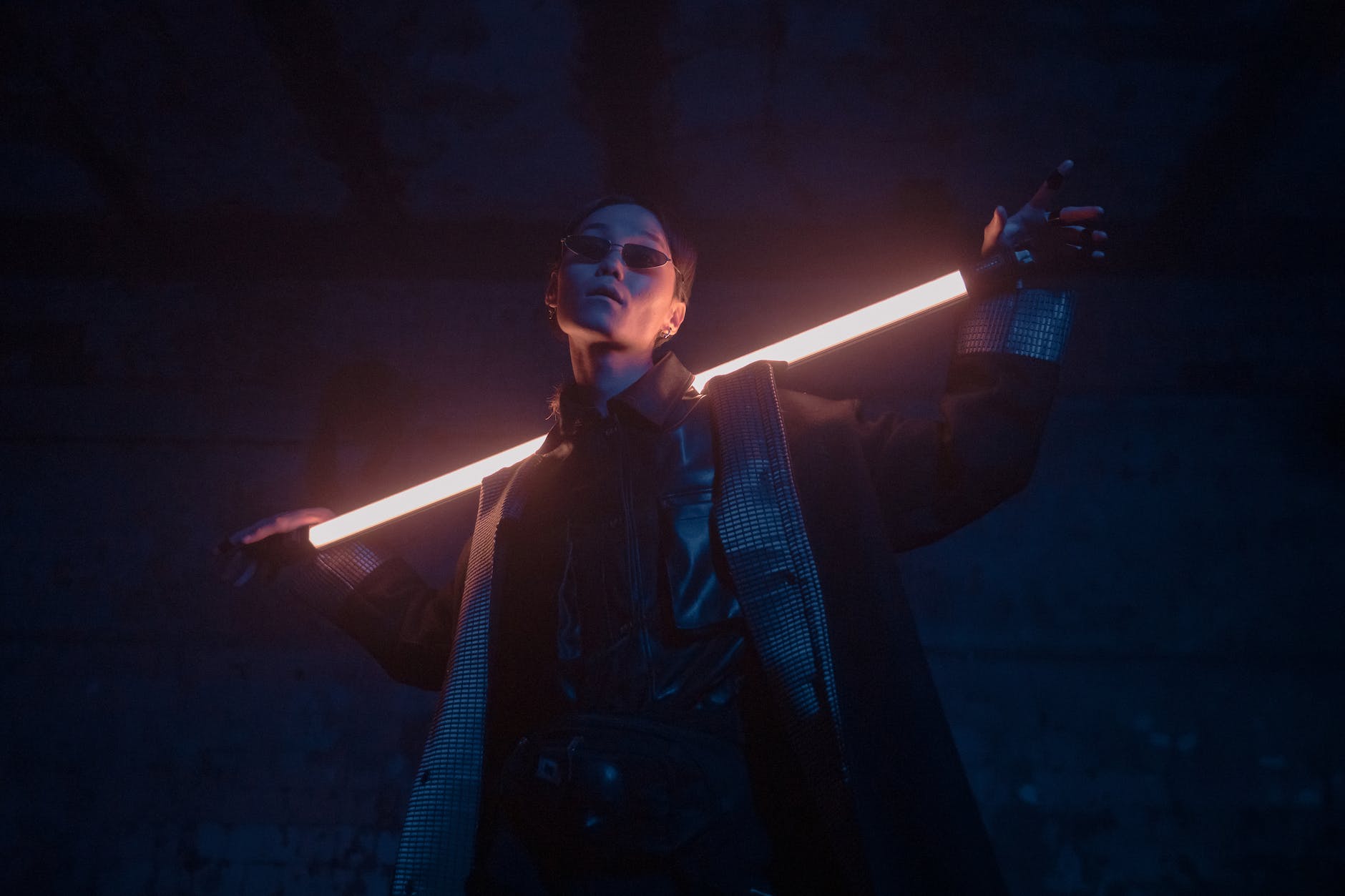This post was inspired by a question I saw on Twitter. It was from someone who usually prefers the pantser lifestyle. Frustrated with their writing process, they asked how one would attempt becoming a plotter. Enter yours truly.
I had the same problem a few years ago when I tried participating in NaNoWriMo for the first time. So I decided to write a guide for everyone out there who wants to learn how to become a plotter. This guide is also useful for anyone who struggles with creating a novel outline. It covers the basic steps to help you formulate your story’s plan.
You can also check out my “How to Plot a Novel” series for more great outlining tips, tricks, and ideas. Not sure what the difference between plotter and pantser is? Check out this post to learn more.
How to Become a Plotter – Five Simple Steps
Step One: Breathe & Relax. Everything Will Be OK
You have discovered that being a pantser isn’t really working for you. That’s ok. This process will take you through everything you need to do to learn how to become a plotter. The first thing you should know is the idea of being exclusively a plotter or pantser is highly unrealistic.
Think of these traits as personality characteristics. Plotters and pantsers all rest somewhere on a spectrum. Learn more about the difference between plotters and pantsers here.
All you need to do right now is breathe and relax. I can feel your anxiety through the screen. You don’t like routines. Lots of structure really isn’t your style. But maybe you actually do need some structure when it comes to writing.
Does this happen to you? Panic and fear take over. Your muse disappears. Ideas elude you. Now what? If only you had an outline to get you through to the next step. But you don’t know how to make an outline.
That’s when you need to take a step back and don’t think about writing for three days. That is your first step. Forget everything you thought you knew and prepare to learn a new writing process. I promise it won’t be that bad.
Back to writing. Did you enjoy your time off? Feeling inspired again? Great. If not, that’s ok too. It is not easy to learn how to become a plotter. It won’t happen overnight and there will be struggles. But with practice, you can do this. When you’re ready, start with freewriting. If you’re a pantser, you’re very familiar with this process already. If not, learn how you can use freewriting to form new ideas and expand on previous ones.
Step Two: Start Small
This is a good transition because you’re organizing your thoughts while still allowing your creativity to lead the way. Once you have finished freewriting about your writing project, you can move on to step three. If you’re not a fan of freewriting, or you want to try something a little more structured to get you started, use mind maps.
Mind maps are similar to freewriting in that you create them without thinking too much. You try to let the ideas fall from your brain onto the page. The only difference is you’re being a bit more organized about the process.
If you’re unsure how to mind map your novel ideas, here is a basic method you can use:

- Grab a blank piece of paper or find a clean page in your writer’s notebook. Choose one big idea and write it in the middle of the page.
- Hold that main idea lightly in your mind and write down anything else comes to mind. Record everything, even stuff that doesn’t seem relevant. If your mind connected it to that idea, there is a reason.
- As you record your thoughts, try to group similar ideas together.
- Keep writing until you can’t think of anything else related to that idea.
- Once you’re finished walk away from your work for a few minutes. Get some water, let your mind breathe.
- Once calm and relaxed, go back to your work and start adding to it again.
- Draw lines connecting related ideas. Circle the most important elements, the ones that stand out to you.
- Keep repeating this process until you’re satisfied.
Note – You can mind map your entire novel, from plot to characters even world-building. Or you can start small with premise ideas or whatever you feel comfortable with. Snag a free mind map template over in the Resource Vault.
Step Three: Work Your Way Up to an Actual Outline
There are so many ways to create a novel outline. They range from relatively simple to highly complex. I suggest starting with a moderately simple outline. Going from pantsing it to developing a highly complex outline can be done, but it’s not for the faint of heart.
For a simple way to develop an outline try the One-Sentence Summary Method*. This is what I started with. Think about your overall story in terms of chapters or sections. Write down one sentence to describe the basic idea of what occurs in each section.
Once you’re done with that, go back to each section and turn that sentence into a paragraph. Repeat the process until you have two or three paragraphs for each chapter. This should be enough to guide your writing process and still allow for maximum creativity.
If your story doesn’t really have chapters or sections (or you can’t get that far in your outlining process yet) you can also try the List of Events Method*. For this, you must know what your main character does in the beginning, middle, and end of your story. Write a list of all the events that lead from the beginning to the end.
You don’t need complete sentences for this part. Just get the ideas written down in some type of sequence. Once you’re finished with that, go back and rewrite the list using complete sentences. Reorder events as needed. Then expand each sentence into paragraphs.
This will show you who your characters are and how they act. It will also get you thinking about your world-building or setting. Keep expanding until you’re satisfied with your fresh new outline.
* I don’t know if the “One-Sentence Summary” and “List of Events” are actual plotting methods used by other writers. This is simply what I call them. They have worked for me in the past as I learned how to become a better plotter. I hope they help you too!
Choosing Your Plotting Method & Story Structure
This is a more formal and structured approach to developing a novel outline. What’s the difference between novel outlining, plotting method, and story structure? Well, I’m not sure there is a technical difference. But for our purposes, we shall say novel outlining consists of two parts: the plotting method and the story structure.
The plotting method is the physical construct for your outline. For example, a mind map or the snowflake method. It’s like choosing the house you’re going to live in.
On the other hand, you have your story structure. This is all the details of your story. It is much more intricate with many different parts. Your story structure is all the things that go inside your house, from the plumbing and electrical to fancy flowers for decoration.
Since you have already practiced mind mapping, you could use that plotting method. You could also stick with just freewriting. Check out this post for more ideas on plotting methods. Choose which one you feel the most comfortable with.
Then decide on your story structure. This post covers three basic types of story structure. The most common is the Three Act Structure. There is also the Seven Point story structure and the Hero’s Journey. There is no single story structure that works for everyone. You must decide which one best fits with the novel idea you have.
Step Four: Expand Your Outline As Much As You Can
You have the basic points of your novel. You know which outlining method you’re going to use. It’s time to really elaborate on your ideas. Depending on the method you choose, you might be able to develop a decent outline in one day.
But chances are it will take longer than that. My first outline took me a week. Now it takes a month or more. Why does it take longer now? Because I’ve moved more towards the plotter end of the spectrum. Creating an outline can be almost as much fun as writing the story.
Getting to know every detail of your story is like going on a grand adventure. You’re exploring new places, experiencing raw emotion, seeing things from different perspectives. It’s like writing your story without the constraint of the book structure.
Once you figure out all the little details, you simply assemble the pieces to reveal a masterpiece. The point is, make your outline process fun. You should enjoy it as much as you enjoy writing.
If you feel comfortable you can try creating character sheets, developing character arcs, even working your way into worldbuilding. Seems like too much? Then stick with what you have. You got this, my friend. You can learn how to become a plotter. I know because I did it, too.
Step Five: Know Your Outline Doesn’t Dictate Your Novel, You Do!
So now that you have a complete outline, what should you do? The best thing to do is start writing. You can follow your outline to the letter, writing each paragraph based on what you said would happen. The more likely scenario is you will follow the basic ideas of your outline, but branch off into different areas as your creativity ebbs and flows.
The best part of having an outline is when you get stuck. As a pantser, getting stuck is life-shattering. As a plotter, it’s still horrible, but much easier to recover from. Even when you get stuck and can’t think of where to go next, your trusty outline is there by your side to lead the way.
The hardest part of becoming a plotter can be the fear of losing your creative freedom. But I can tell you from experience, that is not the case. It’s like having another medium for your creative process to explore. Outlining is different and often difficult, but once you get into the habit, it’s really fun.
The world needs your story. So stop worrying about it and get back to writing. Don’t forget to drop by the Resource Vault for tons of free printable novel writing tools, including plotting workbooks and outlining tools.




